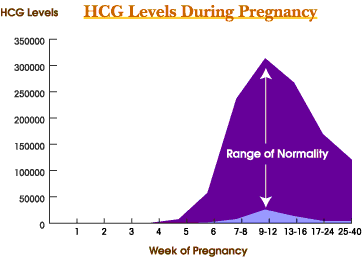 You will be confused about what the acronym “hCG” means. Familiarity with the term these letters represent would likely come about if you have some experience with fertility treatments or the language of fertility specialists. hCG stands for human chorionic gonadotropin. It is a hormone produced by the fertilized egg of a pregnant female.
You will be confused about what the acronym “hCG” means. Familiarity with the term these letters represent would likely come about if you have some experience with fertility treatments or the language of fertility specialists. hCG stands for human chorionic gonadotropin. It is a hormone produced by the fertilized egg of a pregnant female.
It is hCG that causes the early signs and symptoms of pregnancy and also triggers the need to actually go and have a pregnancy test done. Indeed, the typical symptoms of pregnancy, such as sudden bouts of nausea, particularly in mornings for most women, seemingly unexplained fatigue, exaggerated emotional responses, extra fullness or tenderness of the breasts, are all attributable to the presence of hCG in a female.
hCG Levels Chart by Week
While it is not a hard and fast rule, it is generally the case that hCG levels increase by about 60% every two to three days during early pregnancy. Nevertheless, the level of the increase is dependent on the particular woman as well as on the number of fertilized eggs she is carrying. As a result, the symptoms of pregnancy vary for each woman.
The following hCG levels chart will give you an idea of the hCG levels that are typical at different stages of pregnancy:
|
Gestational Age (weeks from the last normal menstrual period) |
Amount of hCG Levels |
|
3 weeks |
5 – 50 mIU/ml |
|
4 weeks |
5 – 426 mIU/ml |
|
5 weeks |
18 – 7,340 mIU/m |
|
6 weeks |
1,080 – 56,500 mIU/ml |
|
7-8 weeks |
7, 650 – 229,000 mIU/m |
|
9-12 weeks |
25,700 – 288,000 mIU/ml |
|
13-16 weeks |
13,300 – 254,000 mIU/ml |
|
17-24 weeks |
4,060 – 165,400 mIU/m |
|
25-40 weeks |
3,640 – 117,000 mIU/m |
|
Women who are not pregnant |
<5.0 mIU/ml |
|
Post-menopausal women |
9.5 mIU/ml |
Note: The figures above are intended for reference only and should not be construed as absolute for all women without exclusion. Women’s bodies and hormone levels may each respond differently to pregnancy. Be sure to consult with your doctor if you are concerned that your own hCG levels are not within these quoted ranges.
Things You Need to Know About hCG Levels
- Studies show that every two to three days in 85% of normal pregnancies, the hCG levels increase two times. As pregnancy advances, the rate at which the hCG levels increase, and may take as much as four days to double.
- Mothers-to-be should not base the health of their pregnancy on hCG levels. Mothers who have had low hCG levels have had normal pregnancies and born healthy babies. The result of an ultrasound taken at about five or six weeks of pregnancy is a more reliable indicator of fetal and maternal health than hCG levels.
- The unit of measurement for hCG levels is milli-international units per milliliter (mlU/ml).
- When you take a pregnancy test, what it really means is that you are checking for the presence of hCG. If you are pregnant, your hCG level is normally more than 25 mlU/ml. An hCG level of less than 5 mlU/ml will give a negative pregnancy test result.
- When hCG levels reach around 1500 mlU/ml, a trans-vaginal ultrasound, administered by placing a transducer probe into the vagina to view the uterus, cervix and ovaries, should show a gestational sac. This may vary because calculations of the exact date of conception may not be accurate.
- Repeated hCG levels tests should be performed for proper assessment of health during pregnancy. This is because each pregnancy is unique and hCG levels may change at different points for various reasons.
- It is not recommended that hCG levels are used as an indicator of gestation age because these figures tend to vary considerably.
- The most common types of hCG tests are qualitative tests and quantitative tests. Qualitative tests are just used to determine whether there is hCG in the blood. The latter, also referred to as beta hCG, measures the level of hCG in the blood.
The purpose of checking hCG levels is certainly not to determine the physical or psychological health of the fetus. Rather, it is simply to establish that the levels of the hormone are consistent with what is considered the medical norm. When hCG levels are read at 6000 mlU/ml, it is unlikely that they will double before days have passed. When gestation has reached about nine or ten weeks, hCG levels begin to drop. This accounts for the decrease in morning sickness for the majority of pregnant women.
Keeping rigid tabs on hCG levels more than 6000 mlU/ml in early gestation is totally unnecessary because the rate of increase of the hormone levels is quite slow and cannot be relied on to determine the health of the pregnancy. After eight to twelve weeks gestation, the rate of increase of hCG levels will decrease even more, until it reaches and maintains an ambient level for the rest of the pregnancy.

